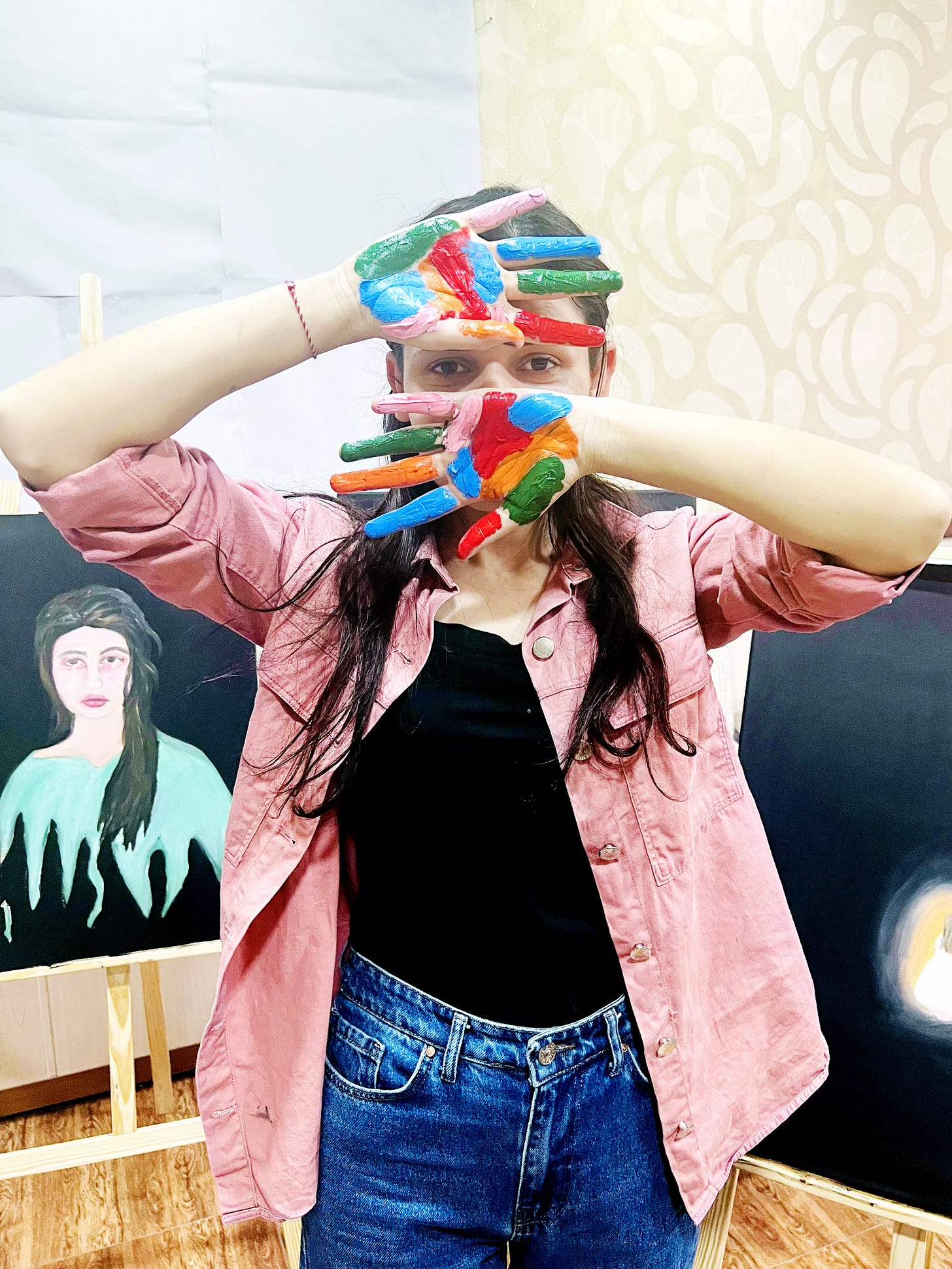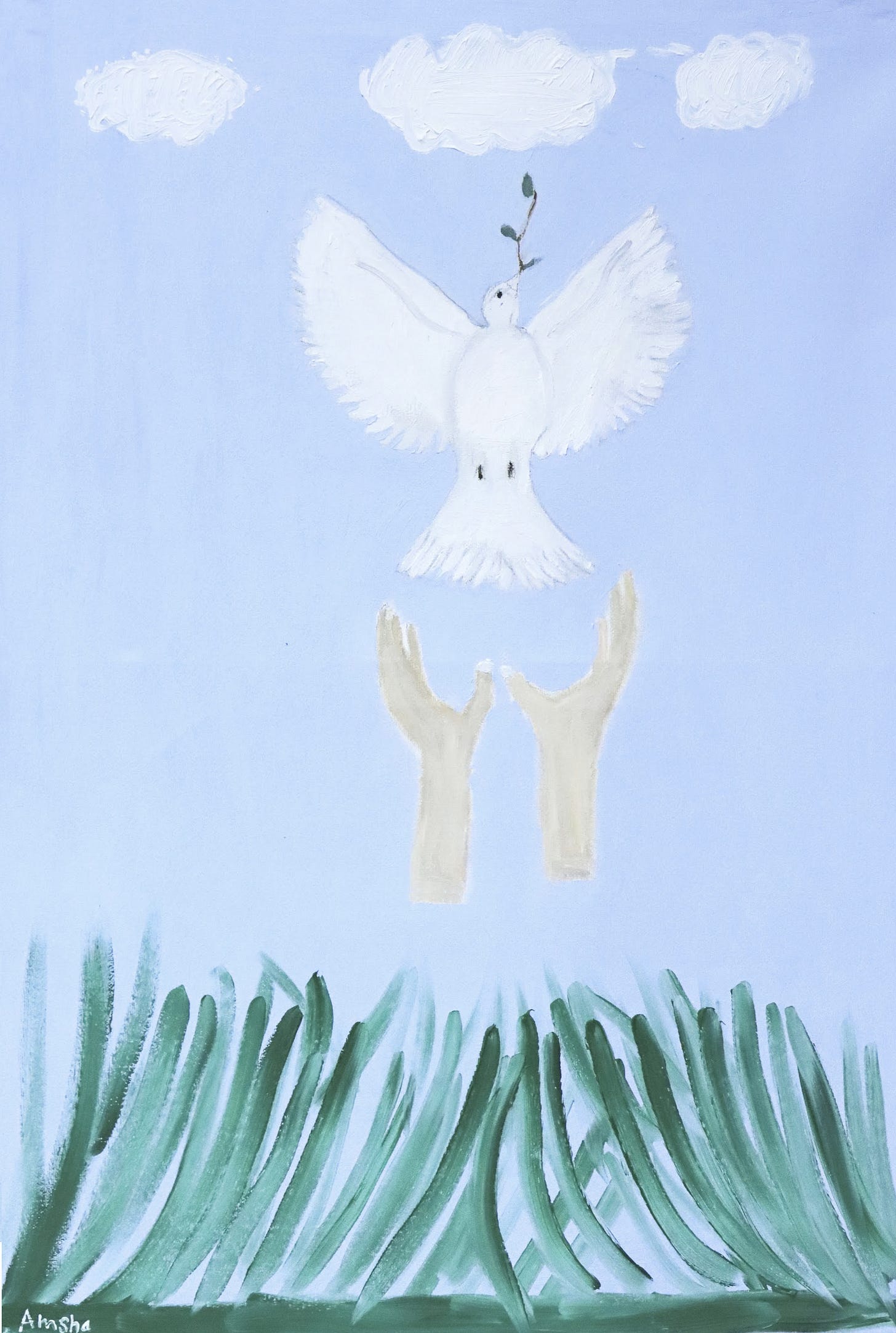‘I am a Yazidi survivor’: the displaced women turning trauma into art
A new online archive aims to preserve the culture Islamic State tried to wipe out.
Only have a minute to read this newsletter? Here it is in brief:
Islamic State’s campaign of murder and enslavement still looms over the Yazidi community in Iraq, more than eight years after the militant group’s attempted genocide.
Yazidi women have been telling their stories of captivity and sexual violence ever since, but sharing trauma with outsiders can take a significant toll on survivors.
A new online cultural archive provides a space where women can share their stories through art, while preserving the culture Islamic State tried to destroy.
Read on for more. And if you want to be up-to-date on feminism worldwide, follow us on Twitter and Instagram.
Parlez-vous français ? Impact is also available in French:
There is one statistic I teach my journalism students every year. It is this: in a study of 26 displaced Yazidi women in Iraqi Kurdistan, 85% reported encountering unethical practices when they were interviewed by journalists about their experiences under Islamic State.
When the militant group swept through Iraq in 2014, the members of the Yazidi ethnic minority were directly in their sights. The militants embarked on a campaign of ethnic cleansing, massacring men and boys and enslaving women and girls.
Today, more than 2,700 Yazidi women and children are still missing, many of them believed to remain in captivity, and 200,000 people are still living in displacement camps. The Yazidi homeland is peppered with mass graves, making return even more difficult and traumatic. Just two members of Islamic State have been convicted of genocide so far.
I teach the 85% statistic because it haunts me. It is emblematic of everything journalists can get wrong when they report on sexual violence, and it shows far we still have to go as a profession. It shows that too often, the desire to get the story out can cause real harm to some of the most vulnerable people a journalist will ever encounter.
I share it with my students in the hope that the next generation of journalists will not walk into a refugee camp’s safe space for survivors of sexual violence and shout, “Has anyone in here been raped?” as one reporter is alleged to have done in Bangladesh when reporting on the Rohingya ethnic minority.
And it was this statistic that came to mind when I heard about the Yazidi Cultural Archive: a series of online exhibitions hosted by Google’s Arts and Culture platform featuring artwork by 16 women who survived Islamic State occupation. If the testimonies that initially reached us from the Sinjar district via journalists were not all collected ethically, here was an opportunity to hear from survivors directly, through the medium of painting, photography and video.

The project is a collaboration between a number of NGOs, including Yazidi advocacy group Yazda, as well as the United Nations and Community Jameel, a Saudi philanthropy group. It is being evaluated by Arts & Health at New York University for its potential benefits to participants.
But it serves another function beyond the wellbeing of the artists involved. Ethnic cleansing is not just about killing or enslaving a population. Perpetrators of genocide also seek to destroy the cultural practices that bind a community together, to destroy their common heritage. The archive, then, is a testament to the fact that Islamic State did not succeed in their genocidal plan.
Three survivors shared their experiences of healing through art with the Impact newsletter, through an agency working with the archive.

“As survivors, we usually can't describe what happened to us and what we have been through, so art and drawing was my way of expression,” said 22-year-old Amsha Ali Ravo, from the Kocho village in Sinjar. Kocho was the site of one of Islamic State’s worst massacres; 16 mass graves have been excavated in the village so far.
Ravo now lives in the city of Zakho in Iraqi Kurdistan. Her painting shows a white dove being released into the sky by two upraised hands. She says this represents the feeling of being freed from Islamic State captivity. “Drawing helped me to express myself,” she told the Impact newsletter.
Feryal Saeed Talal, 21, said making art “taught me to be strong, to have new experiences, and to know how to see the future”. Her painting, of a woman in red with her hands in the air, also speaks to her experience of escaping Islamic State. In her testimony to the archive, she says she was “tortured in a way that cannot be justified” and “forced into my imagination” by her captors.
“I participated in the drawing workshops to show the world what the survivors went through when they were captured by ISIS and what happened afterwards,” she said.

Ibtihaj Ameen Barakat, 18, told Impact: “I am a Yazidi survivor. Da'esh [Islamic State] wanted to exterminate my religion, but I won’t let that happen. I want to use my art and our traditions and customs to protect it … Drawing helped me to express the freedom and peace I found in our Yazidi religion after Da'esh were defeated, in particular for the rights of women.”
I do not want to suggest that art therapy or cultural archives are a substitute for on-the-ground reporting of mass atrocities. One ray of hope from the study of displaced Yazidi women’s interactions with journalists came from the fact that 75% of the women interviewed felt that talking to a reporter was worthwhile, despite how distressing it was to recount their experiences, and despite the unethical practices they encountered.
I have the utmost respect for my colleagues who put themselves in harm's way to report on war and other humanitarian crises. But my hope is that, as a profession, we can improve the way we work with survivors so they can tell their stories safely, and that we think about new ways to share their experiences, through art or otherwise.

Survivors of trauma are often caught between two imperatives: the desire to prevent the same thing from happening to anyone else by speaking out, and the intense difficulty of describing the worst moments of their life. Nadia Murad, a Yazidi survivor who won the Nobel Peace Prize in 2018 for her advocacy against conflict-related sexual violence, knows this only too well.
“It never gets easier to tell your story,” Murad wrote in her memoir, The Last Girl. “Each time you speak it, you relive it.”
As someone who has told their story to the United Nations, the European Parliament and the Nobel Committee, Murad has some advice for those who want to report on the Yazidi experience.
“When you ask a Yazidi to repeat her grim testimony, you should consider what an emotional toll that exacts,” she wrote in an opinion piece for the New York Times. “And when you recount what happened to us, please do not use that demeaning phrase ‘sex slaves’ to refer to us. We are survivors.”


